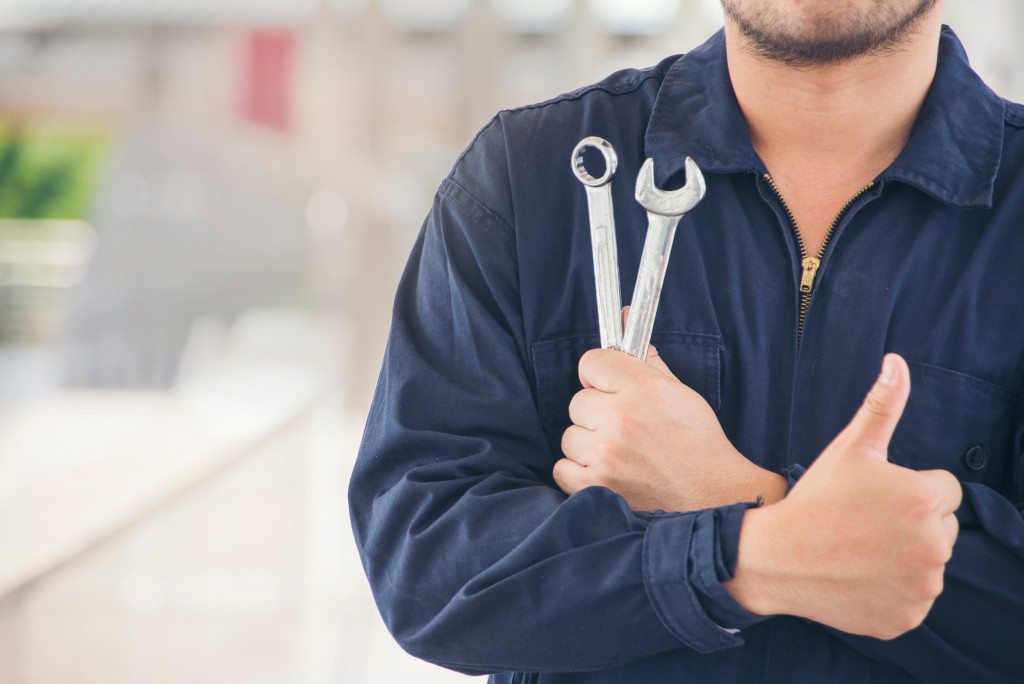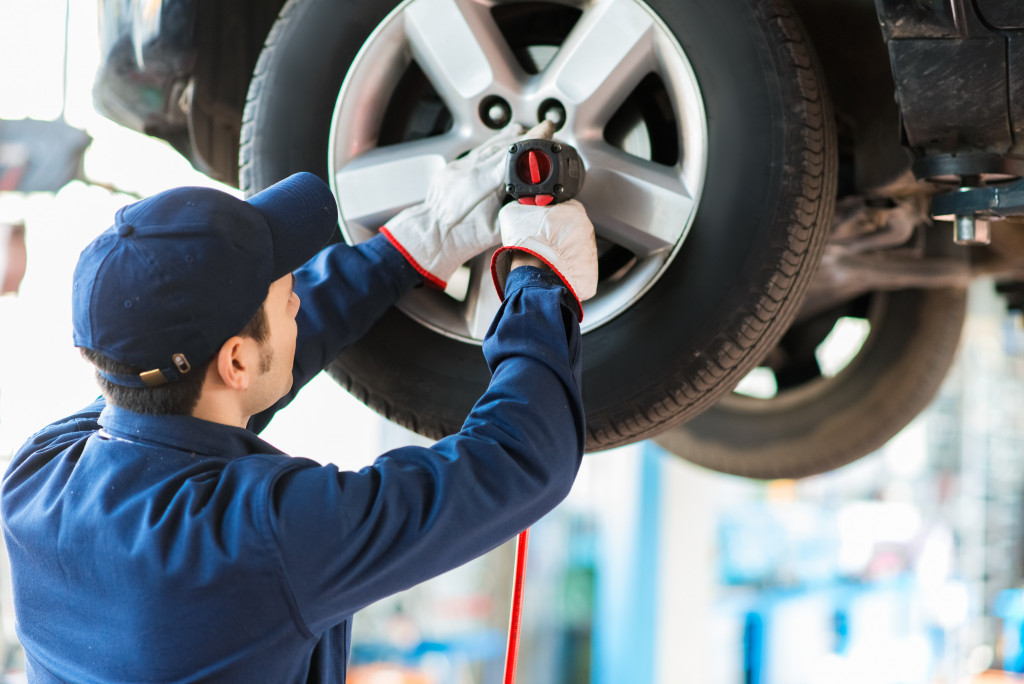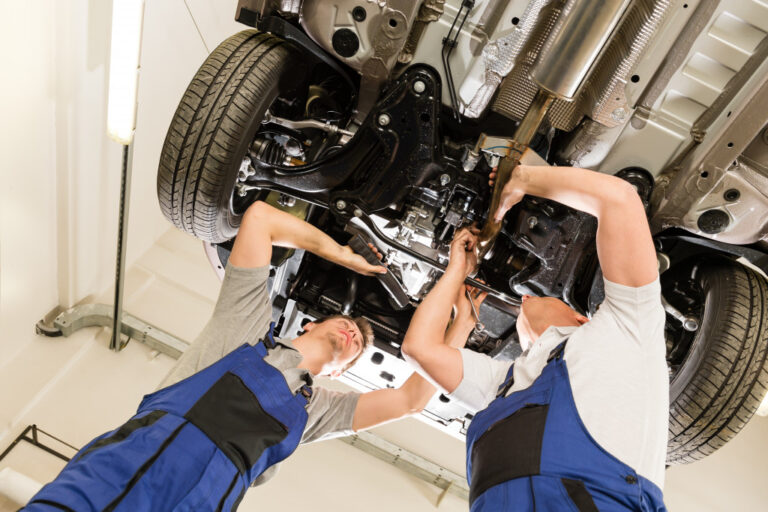- Comprehensive risk assessments and regular maintenance of equipment can significantly mitigate potential hazards in an auto repair shop.
- Installing safety upgrades and high-quality protective gear enhances workplace safety and prevents accidents.
- A well-implemented hazard communication program ensures employees understand and can respond to chemical risks.
- Having an effective emergency response plan in place is vital, even with all safety precautions implemented.
As a business owner or company leader in the auto repair industry, prioritizing your workers’ safety and well-being is crucial. Small auto repair shops can have high potential risks and hazards, leaving your employees more vulnerable to accidents and injuries. Therefore, implementing safety precautions and protocols should be a top priority for any auto repair shop. This blog post will discuss the best practices you can implement to increase safety precautions in your small auto repair shop.
Conduct Comprehensive Risk Assessments
To mitigate the risk of accidents and injuries, it is crucial to identify all potential risks within your auto repair shop. Take time to conduct a comprehensive risk assessment of your shop, machinery, equipment, and employee tasks and workstations. Evaluate the possible hazards that may arise and develop tactics to mitigate them. Here are some practices that you can teach your employees:
Train Your Employees To Identify and Report Any Potential Hazards
Encourage a culture of safety through active participation from your employees. Train them not only in their specific tasks but also in identifying potential hazards in their work environment. This could involve recognizing loose wires, spotting leaks, or noticing improperly stored equipment. Ensure there is a straightforward process for reporting these hazards, and stress the importance of doing so immediately.
Ensure Regular Maintenance of Equipment and Machines
Regular maintenance and inspection of all equipment and machines are vital in maintaining a safe working environment. Poorly maintained machines can malfunction or break down, posing a serious risk to your employees. Establish and adhere to a regular maintenance schedule, and make sure to replace any equipment that is worn out or no longer safe to use. All maintenance and inspections should be documented for accountability and reference purposes.
Encourage Employees To Follow All Safety Protocols
Every effort put into creating a safe work environment will be in vain if your employees don’t adhere to the safety protocols. Therefore, it’s essential to encourage and enforce the consistent application of all safety rules. This can be done by providing regular safety training and reminders or even implementing a system of rewards for adherence to safety measures. After all, everyone in your shop has a role to play in maintaining a safe environment.

Install Shop Upgrades
Upgrading your shop with the latest safety equipment can significantly reduce the risk of workplace accidents. Consider investing in items like fire extinguishers, first-aid kits, and safety signs. Additionally, utilizing safety-focused technologies, such as ventilating systems to control fumes and dust or machinery with built-in safety features, can further enhance safety. Here are some pieces of equipment to prioritize:
2-Post Car Lifts
One of the key pieces of equipment in any auto repair shop is the car lift, and the 2-post lift is among the most common. Choosing to buy durable 2-post car lifts can make a significant difference in both the safety and efficiency of your shop. Designed for heavy-duty lifting, a well-built 2-post car lift provides a secure platform for workers, reducing the risk of accidents dramatically. Moreover, investing in high-quality lifts can increase their lifespan, providing excellent value over time.
Air Compressors and Vacuum Systems
Air compressors and vacuum systems are essential for powering tools, inflating tires, and removing debris in the shop. However, these machines also release hazardous fumes and can contribute to poor air quality if not adequately contained. Installing proper ventilation or a filtration system will help reduce the potential health risks associated with these machines.
High-Quality Protective Gear
Making sure your employees have the proper protective gear is crucial in keeping them safe while on the job. This includes items like gloves, safety glasses, and coveralls. It’s also essential to provide regular training on how to properly use and maintain this equipment. Remember, investing in quality gear can go a long way in reducing injuries and improving overall safety in your shop.

Establish a Hazard Communication Program
A successful hazard communication program is key to ensuring that your employees understand the potential dangers of the chemicals in the workplace. This program should involve properly labeling hazardous materials, maintaining safety data sheets for all chemical products, and appropriate training for employees regarding handling and responding to chemical hazards.
Regularly updating and communicating this program can go a long way in preventing accidents related to chemical exposure. For instance, if an employee knows the proper protocol for handling a specific chemical, they can take necessary precautions and avoid accidents or injuries.
In some cases, accidents can still occur despite implementing all these safety precautions. In such cases, it’s essential to have a clear and effective emergency response plan in place. This includes having the necessary first-aid supplies easily accessible and ensuring employees are trained in basic first-aid procedures.
Creating a safe and healthy working environment for employees is crucial to protecting your workers and the success of your auto repair shop. An accident or injury can have severe consequences on your business’s effectiveness and your employees’ health. Therefore, providing and implementing the above best practices for increasing safety precautions at your small auto repair shop is essential as an employer. These actions will improve safety at the workplace, reduce the risk of accidents, and increase the well-being of your employees.




